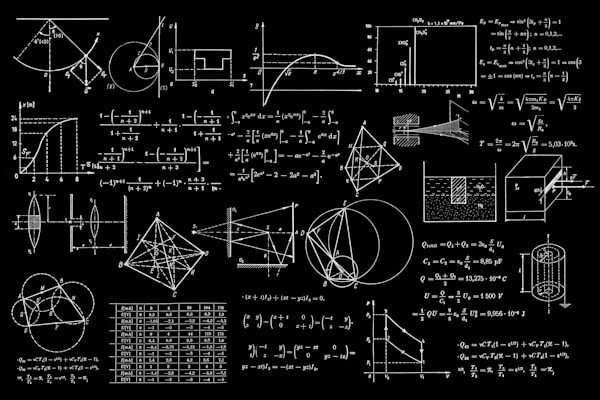Introduction to Gauge Theories
Gauge symmetries represent one of the most profound organizing principles in modern theoretical physics. These mathematical symmetries underpin the Standard Model of particle physics, describing electromagnetic, weak, and strong nuclear forces through a unified framework. Understanding gauge theories requires appreciating how local symmetries—symmetries that can vary from point to point in spacetime—necessitate the existence of force-carrying particles and determine their interactions.
The Principle of Local Gauge Invariance
A gauge symmetry is a redundancy in the mathematical description of a physical system. In quantum field theory, gauge transformations modify field variables without changing physical observables. The key insight is demanding local gauge invariance: the freedom to perform different transformations at different spacetime points.
Consider electromagnetism. The electromagnetic field can be described by a vector potential Aμ, but this potential isn't unique—we can add the gradient of any scalar function (gauge transformations) without affecting the physical electric and magnetic fields. This U(1) gauge symmetry, when elevated to a local principle, requires introducing the electromagnetic field itself as a gauge field, with photons as the force carriers.
Yang-Mills Theory and Non-Abelian Gauge Groups
Electromagnetism involves U(1), an abelian (commutative) gauge group. Chen Ning Yang and Robert Mills generalized this in 1954 to non-abelian groups, where gauge transformations don't commute. This generalization proved essential for describing strong and weak nuclear forces.
For a non-abelian gauge group like SU(2) or SU(3), gauge fields themselves carry charge and interact with each other, unlike photons in electromagnetism. This self-interaction produces qualitatively different physics: quark confinement in quantum chromodynamics (QCD) and the massive W and Z bosons in electroweak theory after symmetry breaking.
The Standard Model: SU(3) × SU(2) × U(1)
The Standard Model's gauge group combines three factors: SU(3) for color charge (strong force), SU(2) for weak isospin, and U(1) for hypercharge. These symmetries dictate all particle interactions observed in accelerator experiments.
Quantum chromodynamics (QCD), based on SU(3) color symmetry, describes quarks and gluons. Eight massless gluons mediate the strong force, exhibiting asymptotic freedom—the force weakens at high energies—and confinement—isolated quarks cannot exist at low energies. These properties emerge from the non-abelian nature of SU(3).
The electroweak sector unifies electromagnetism and weak interactions through SU(2) × U(1). Originally formulated with massless gauge bosons, the Higgs mechanism spontaneously breaks this symmetry, giving mass to W and Z bosons while leaving the photon massless. The 2012 Higgs boson discovery at CERN confirmed this mechanism experimentally.
Renormalization and Quantum Corrections
Gauge theories become complete only after addressing quantum corrections. Loop diagrams in quantum field theory produce infinities requiring renormalization—systematic procedures to absorb divergences into redefined parameters. Yang-Mills gauge theories are renormalizable, making them predictive frameworks.
The renormalization group describes how coupling constants vary with energy scale. In QCD, the strong coupling decreases at high energies (asymptotic freedom), allowing perturbative calculations for high-energy processes. Conversely, it grows at low energies, leading to confinement. These running couplings are measurable predictions distinguishing gauge theories from alternatives.
Beyond the Standard Model: Motivations
Despite extraordinary success—predicting particle masses, decay rates, and cross-sections to remarkable precision—the Standard Model is incomplete. Several observations demand extensions:
- Neutrino masses: Neutrino oscillations prove neutrinos have mass, contradicting the original Standard Model.
- Dark matter: Astronomical observations indicate 85% of matter is non-luminous, with no Standard Model candidate.
- Dark energy: The universe's accelerated expansion suggests unknown energy dominating cosmic dynamics.
- Hierarchy problem: The Higgs mass requires fine-tuning to remain light given quantum corrections.
- Unification: The three gauge couplings don't quite unify at high energies within the Standard Model alone.
- Gravity: General relativity remains unintegrated with quantum field theory.
Supersymmetry (SUSY)
Supersymmetry proposes a symmetry relating fermions (matter particles) and bosons (force carriers). Each Standard Model particle would have a superpartner: selectrons, squarks, photinos, gluinos, etc. SUSY addresses multiple Standard Model problems simultaneously.
The hierarchy problem finds elegant resolution in SUSY: fermion and boson loop corrections to the Higgs mass cancel, naturally maintaining lightness. SUSY also aids gauge coupling unification—the three forces' strengths converge at a single energy scale around 10¹⁶ GeV in minimal supersymmetric extensions.
Moreover, the lightest supersymmetric particle (LSP), if stable and electrically neutral, provides an excellent dark matter candidate. Despite these attractions, no superpartners have been discovered at the Large Hadron Collider, pushing SUSY breaking scales higher and raising questions about naturalness.
Grand Unified Theories (GUTs)
Grand Unified Theories embed the Standard Model's SU(3) × SU(2) × U(1) within larger simple groups like SU(5), SO(10), or E₆. At energies above the GUT scale (~10¹⁶ GeV), the unified symmetry holds; below this energy, spontaneous symmetry breaking separates the forces.
GUTs predict proton decay—quarks and leptons mix within the same multiplets, allowing processes converting protons to lighter particles. Current experimental limits on proton lifetime constrain but haven't eliminated GUT scenarios. The gauge coupling unification in SUSY GUTs provides quantitative support for this framework.
String Theory and Extra Dimensions
String theory proposes fundamental strings rather than point particles, naturally incorporating gravity alongside gauge forces. Different string vibration modes correspond to different particles. Consistency requires extra spatial dimensions—six or seven beyond the familiar three—compactified on small scales.
Gauge symmetries emerge from the geometry of compactified dimensions. String theory thus offers a geometric understanding of gauge forces, though connecting string theory's high-energy structure (~10¹⁹ GeV) to experimentally accessible physics remains challenging.
Alternative Extensions
Other proposals extend the Standard Model in different directions. Technicolor theories replace the elementary Higgs with composite particles, similar to QCD's pions. Little Higgs models introduce new symmetries protecting the Higgs mass. Extra-dimensional theories, particularly Randall-Sundrum models, explain the hierarchy between electroweak and Planck scales geometrically.
Composite Higgs models suggest the Higgs is bound state of new strongly-interacting particles, resolving naturalness through dynamics rather than symmetry. Each approach makes distinctive experimental predictions, guiding searches at current and future colliders.
Experimental Searches and Constraints
The Large Hadron Collider systematically searches for beyond-Standard-Model physics through direct production of new particles, rare decay processes, and precision measurements of Standard Model parameters. So far, results agree with Standard Model predictions, constraining extension scenarios.
These null results inform theory. Simple, low-scale SUSY appears increasingly constrained. Composite Higgs models face precision electroweak bounds. Extra-dimensional scenarios require higher compactification scales. Yet absence of evidence isn't evidence of absence—new physics might lie just beyond current reach or manifest subtly.
Theoretical Challenges and Open Questions
Several fundamental questions remain. How do we understand the Standard Model's 19 free parameters—masses, mixing angles, coupling constants? Why three generations of fermions? What determines the gauge group structure? Is there a deeper principle underlying gauge symmetry?
The cosmological constant problem—why vacuum energy is 120 orders of magnitude smaller than naive estimates—connects particle physics to cosmology but lacks compelling solution. The strong CP problem—why QCD respects CP symmetry to extraordinary precision—suggests new physics like axions.
Conclusion
Gauge symmetries provide the mathematical backbone of fundamental physics, encoding forces as consequences of local symmetry principles. The Standard Model, built on SU(3) × SU(2) × U(1), represents a triumph of this approach, tested to unprecedented precision.
Yet observations—neutrino masses, dark matter, the hierarchy problem—demand extensions. Supersymmetry, grand unification, extra dimensions, and other frameworks offer compelling possibilities, each with testable predictions. The ongoing interplay between theoretical development and experimental discovery continues advancing our understanding of nature's fundamental symmetries and the quantum fields they govern.
Future experiments—upgraded LHC runs, proposed lepton colliders, dark matter detectors—will further constrain or reveal beyond-Standard-Model physics. Whether nature chooses supersymmetry, extra dimensions, compositeness, or something entirely unexpected remains one of the most exciting open questions in fundamental physics.

